Teach Your Dog to Listen – the Positive Training Trifecta!
Today I want to talk about one of my favorite subjects: what I call the Positive Training Trifecta. Basically, these are three types of rewards you can use with your dog in your positive reinforcement training arsenal. Those are presents, compliments, and massages. Most of you are already doing this stuff. So, the aim of this post isn’t to show you something new and revolutionary but rather to shine a spotlight on it and to get you thinking and using it strategically.
I want you to understand a bit about what happens in your dog’s brain and how you can capitalize on that process. Once you start thinking like this and start tweaking your application, holy smokes—you’ll be amazed at how fast your dog starts paying better attention and doing what you ask. Before we get into the details, though, let’s talk a little bit about Positive Reinforcement. What the heck does that REALLY mean?
POSITIVE REINFORCEMENT
You have two primary approaches in dog training: Classical Conditioning and Operant Conditioning. Just about everything is some application of those two things.
Positive reinforcement is one of the four quadrants of operant conditioning developed by Burrhus Frederic Skinner in the 1940s. “Reinforcement” means that we are increasing a behavior—we are making it more likely to happen again in the future. The “Positive” part means we’re adding something.
Remember that “positive” and “negative” don’t mean good or bad. Dog training is based on psychology, and psychology is a science, and in science, “positive” and “negative” don’t mean good or bad; they mean addition and subtraction. So positive reinforcement means that we’re adding a desirable stimulus to increase a behavior. That’s it.
Many people get caught up thinking that we need to increase the value of the food we’re using to increase the influence of positive reinforcement. No, we don’t. Layering together other kinds of rewards significantly increases the power of the reward system in the first place. And the proper use of food as a training tool should always include an exit strategy so you can get away from it. I talked about this in my Phasing Out Treats video.
Once you’ve stopped using food, what do we have left? Compliments and massages, things we’ve layered on top of the food from the beginning, and now the absence of the food isn’t nearly as significant. So what we’re talking about today are three types of rewarding stimuli that, I feel, give me the most bang for my buck when I’m working with a dog.
See also: Using Reward Scaling.
PRESENTS
Presents are anything that you pre-sent to your dog. As we mentioned, food is the most obvious and probably most widely used present. Food can expedite the training process, it’s terrific for use as both a lure and a reward, and it’s unmatched when used with Classical Conditioning.
While food is a great tool, it’s also terribly abused. Many owners use too much food and use lures way too long. We must phase it out quickly, or we’ll be using it indefinitely. Thus, food is not the only type of present we have available.
Toys can and should be used to train your dogs. We can use toys as lures and rewards for things like Come, and Heel, and Take It+Leave It+Drop It. Playing with toys is a fantastic training opportunity—in fact, this is the point behind several of my other videos.
You can also present abstract things to your dog, such as opportunities, specifically life rewards. The opportunity to run free, to play with other dogs, to play fetch or tug, to sniff the ground and pee on some weeds, and other things dogs enjoy can be easily leveraged as training rewards. Even annoying behaviors can be rewarding opportunities we present. Using life rewards like this leverages the Premack principle, and I have a whole post about that.
Most dogs do things we find annoying because they enjoy them. Well, any annoying behavior can be used as a training reward. Common behavior problems like jumping and barking can be put on cue and used as rewards for other things like sitting and staying. It adds a layer of control and allows the dog to do what they like under the right circumstances.
COMPLIMENTS
Compliments are essentially quality, verbal feedback. Specifically, I covered this in the Voice and Marker training video, but suffice it to say that accurate, timely, and efficient communication is the backbone of good training. We mark behaviors we want, encourage them to keep going when they’re doing it right and praise them enthusiastically when they’re done. Dogs don’t process language, of course, but over time they learn to associate praise with reward, which conditions it to be rewarding in itself.
MASSAGES
Finally, massages—that tactile interaction—is a woefully underused strategy. In my Touch Tactics video, I discussed this in greater detail. But in a nutshell, several spots on your dog are wired up with bundles of nerves that go right to the pleasure centers in their brain. Briefly, these are:
- the chin and chest
- just in front of the ears
- the shoulders and sides of the body
- the inguinal area
- the base of the tail
- the backs of the thighs
I like to work these spots whenever I’m training with a dog.
LAYERS OF REWARD
So to make the Positive Training Trifecta work, we layer all three styles of rewards onto correct responses. Let’s jump back into the science a little bit here…
WHY THIS ALL WORKS
Scientific studies on dogs’ brains show that being fed, praised, touched, and even just a few minutes of playing with their owners prompt a release of several “feel good” chemicals, including serotonin, prolactin, oxytocin, dopamine, and β-endorphin (beta-endorphin). These are all the natural feel-good drugs both your body and your dog’s body manufacture. These create feelings of trust, attachment, and love. They decrease the sensitivity of pain receptors, and they produce feelings of euphoria. These feelings and the chemical process in the brain even have a somewhat addictive quality to them. This is why we’re drawn to our hobbies, favorite foods, and even certain people.
I think you can see where this is headed. Each of the three reward types—presents, compliments, and massages—can and will produce these chemical reactions on their own, but layering them together and using them strategically will amplify the effect and make several options suddenly available to you. As we said in the beginning, this is all positive reinforcement, a component of Operant Conditioning. But let’s take a second step and talk about the other big approach in training: Classical Conditioning.
CLASSICALLY CONDITIONING YOUR DOG
In the simplest terms, Classical Conditioning is learning by association; two stimuli are linked together to produce a new learned response. Two of Skinner’s graduate students—Marian and Keller Breland—continued his work and became both giants in the field of applied animal psychology and two of the world’s most respected animal trainers. They established early on that Classical Conditioning is inseparable from Operant Conditioning. Not only is Classical Conditioning integrated into the process of Operant Conditioning, but we are always—ALWAYS—Classically Conditioning our dogs when we work with them. We are developing what’s called Conditioned Emotional Responses to us and practice in general. We’ve already discussed several examples of it in practice in this article.
That means that deploying the Positive Training Trifecta consistently and genuinely acts as an accelerant for training purposes and builds a powerful rapport and bond with your dog. It cultivates what we call “owner gravity” (aka “spatial gravity”). When all those feel-good chemicals flood their body consistently, they start associating all of those good feelings with YOU and develop a strong attachment and drive to please you.
And over time, the act of doing these things becomes self-rewarding. Doing things with you and doing what you ask become their favorite hobbies. This is how you get a dog that pays attention to you, checks in during walks and off-leash time offers good behaviors without being asked and is generally pretty happy and agreeable most of the time. Plus, compliments and massages are low-cal and fat-free, and you always have them with you! There are, however, some things to consider.
If you want to learn more about Classical Conditioning, I’ve written another post that dives into greater detail!
CAVEATS
Big Feelings
All three of these strategies will be met to varying degrees by different dogs. They will respond based on their temperament and their history with people. Some will like one thing over others, and another dog will be completely the opposite.
Likewise, working with severely aggressive or reactive dogs will mean exercising caution and being safe. One of my favorite behaviorists has said that putting your hands on a dog is an earned privilege. And some dogs have really made me work for it! You certainly don’t want to put your hands on these dogs until you have a much better rapport and establish mutual trust and respect.
Also, dogs with fear and anxiety may not want you to touch them either. Food is sometimes really the only option. Or, a scared dog may not take food in a certain situation because fear suppresses appetite. They may, however, be comforted by you, so you’ll have to use compliments and massages.
Sometimes I get a dog on the first night of a group class that won’t take treats initially because they’re spooked about being there. This is why you’ve got to have several tools at your disposal so there can be something to use for Positive Reinforcement and Classical Conditioning.
Customize ALWAYS
Finally, as I said in the Marker Training video, you must customize your energy. Some dogs require you to be calm and serene with them; others need you to be a cheerleader on cocaine. Most dogs, though, will fall somewhere in the middle. This advice is aimed at the typical pet dog owner (as with most of my content). These may not be appropriate for working or competition dogs, and you’ll have to adapt everything for severe behavior problems. Of course, seek help from a certified professional in these cases.
However, I would say that this stuff works so fast with about 99% of the dogs I work with in private sessions, group classes, and even in shelters. So fast! In fact, of the thousands of dogs I’ve worked with, I can count the ones this stuff didn’t work on with one hand. And yes, I know some of you are thinking it: this does work pretty well on children and significant others.
NOW GO TRY IT OUT!
I’ve linked to all the posts I mentioned in the article. I’ve also linked some scientific articles and people below, so you can learn more if you desire.
Now, questions for YOU: what are your favorite highlights from this video/post? What cool insights have you gained? And what questions do you have? Let’s connect in those comments.
As always: keep learning, keep practicing, and we’ll see you next time. Thanks for looking!
RESOURCES
Want to learn more about Operant Conditioning and Classical Conditioning? The Simply Psychology website actually has a good primer on both of these. Easy reading for the layperson.
We’ve also got our post about Understanding Classical Conditioning.
Important figures in Psychology:
Ivan Pavlov (developer of Classical Conditioning)
B.F. Skinner (developer of Operant Conditioning)
Keller and Marian Breland (Skinner’s grad students and giants in the field)
Some more Science-y stuff:
Article: “What are Endorphins?”
Article: “The Chemistry of Dog Training.” This article has an exhaustive list of further resources if you want more!


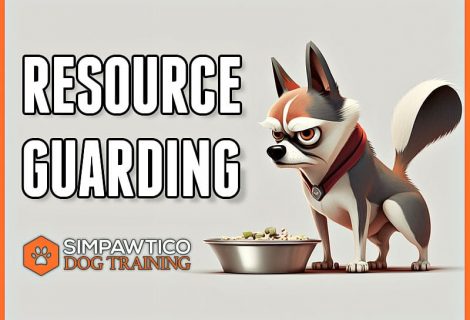
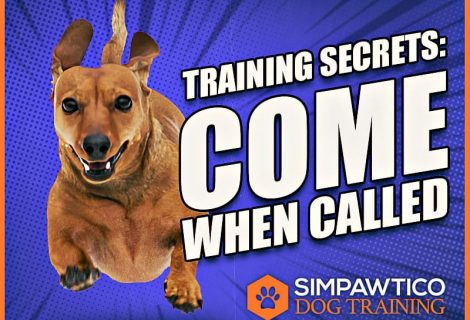
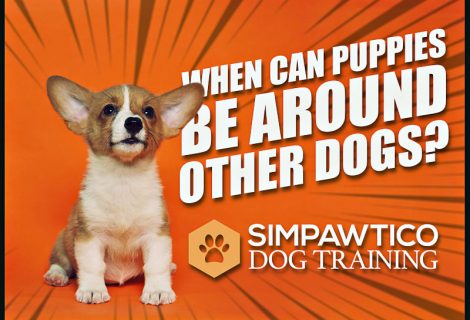

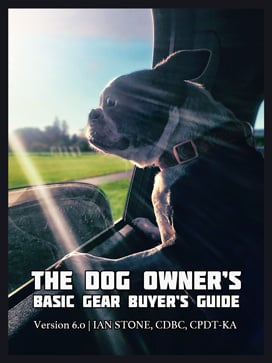


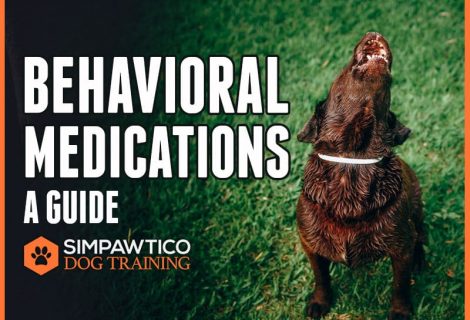
Trackbacks for this post